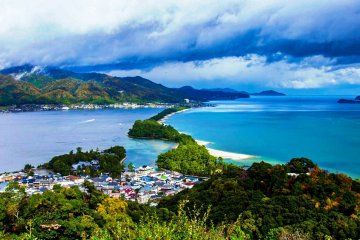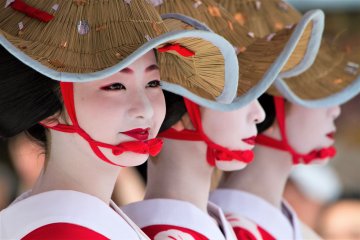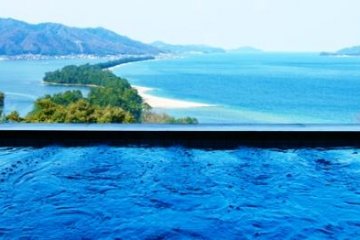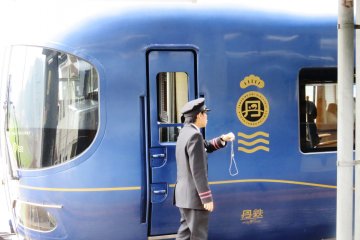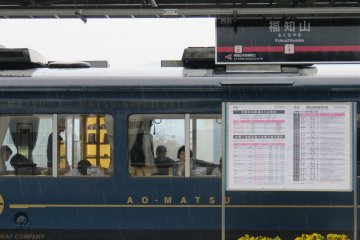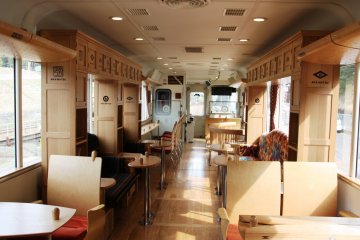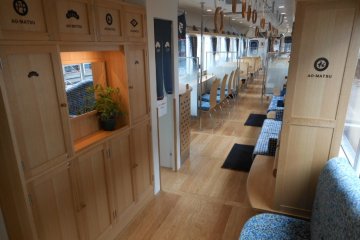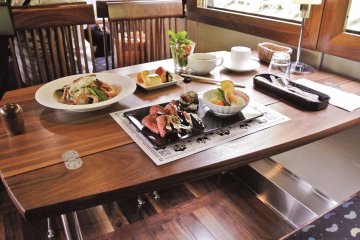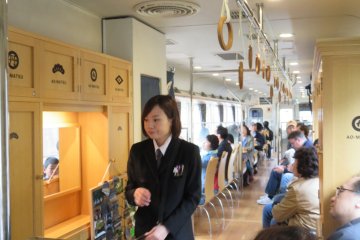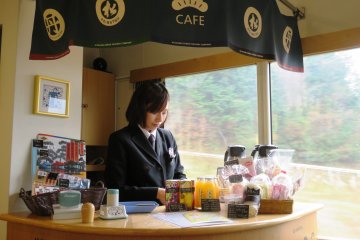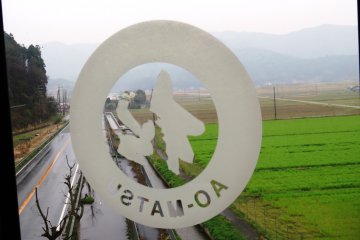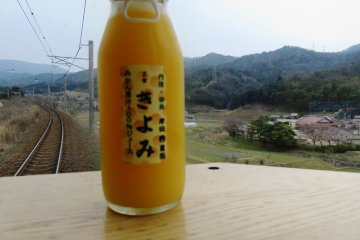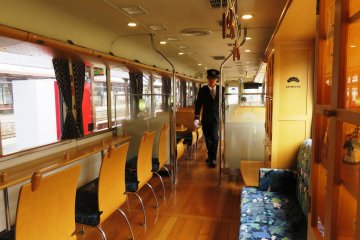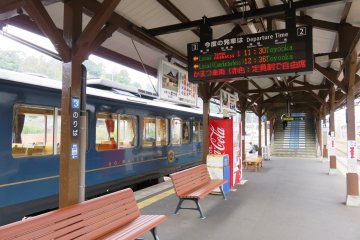Nearly 2 million international visitors stay in Kyoto City each year, but less than 5% go off the beaten track (and leave the city area.) Considering that the city makes up less than 20% of Kyoto Prefecture, it is both a surprise and a shame. however, it leaves the pristine countryside to adventurers like us. One of these places is the coastline between Maizuru and Amanohashidate, as well as the countryside between Fukuchiyama and Miyazu.
Since the introduction of train travel, the idea of luxury dining to the clickety clack sound of the train tracks have held allure and glamour for many travelers. While Europe has the Orient Express, Kyoto's north coast now has a Japanese version, the Kyoto Tango Railway's Matsu train. Named after the pine trees that line the shore at Amanohashidate, where the untouched green mountains touch the sea. This is one of the most beautiful parts of Japan to travel by train. The natural scenery is a bit like the coast between Naples and Sorrento or French Riviera, but with Japanese trees and architecture.
Relax with luxury dining in polished wood carriages, taking you on three different routes every Friday, Saturday, Sunday as well as on public holidays. These morning and afternoon trips are a great way to have a day trip to one of Japan's top three scenic areas, connecting it with the Japan Railway (JR) stations at Nishi-Maizuru and Fukuchiyama. Tickets cost between 4,000 and 11,000 yen with a small discount for children. The mid morning train from Fukuchiyama and Amanohashidate, which returns just after 1230pm, is free for those with a 1 or 2 day Kyoto Sea pass, which is an "all you can travel" pass on the Kyoto Tango Railway as well as giving you access to bike hire/ cable car/ chair lift and boat rides in the Amanohashidate area. The other trains which offer a main meal (usually lunch) would cost extra for pass holders, and best reserved in advance, traveling from Nishi-Maizuru to Toyooka via Amanohashidate.
From Amanohashidate, a perfect day trip would be to take a cruise or a bike to the north shore at Ichinomiya, or venture further to Ine-cho village. It is a wonderful place to visit in any season, but come back for the fireworks and summer festivals in August or the Buddhist cuisine on April 2, or the crazy bird feeding frenzy with kites and seagulls on the sightseeing cruise.
Or you can try a fishing expedition starting from a few hours to a full day on a chartered boat. There are lots of fish as can be attested at the fish unloading area, the unofficial fish markets including fugu and lots of medium size fish the size of 30 centimetres or so, though the market is also a feeding frenzy for crows, kites and seagulls as the fisherman sort through the fish with the conveyor belt like machine that looks like a sight from National Geographic being so raw and unadorned, with a distinctly earthy look with sky blue boots, water, cogs turning under the roof of a very well used and entirely functional shed.




